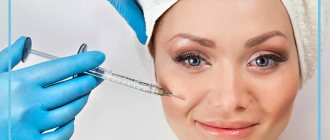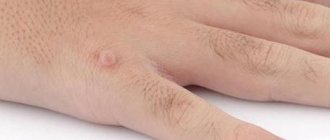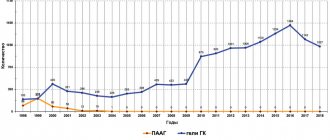- Handmade tattoos require fewer procedures;
- Small drawings are completed in a short time, provided that the drawing is not dense;
- Dark skin requires fine tuning of laser power, the number of procedures increases;
- Bright, dense tattoos take longer to fade;
- Drawings located on the legs require more sessions to remove.
The total time of the procedures is about a year. This information can be taken as basic information. How many sessions are needed to remove a tattoo with a laser is more precisely determined after consultation with a cosmetologist.
Features of laser tattoo removal
Tattoo culture developed gradually.
Today there are 3 general types of skin tattooing on the human body, depending on the purpose:
- Professional drawings. Drawings that are applied under the skin using needles and special equipment. The peculiarity of the work is that pigment paint is fixed at the end of the needle, which is embedded in the upper layer of the skin and remains there for a long time.
- Cosmetic tattoos. This category includes permanent makeup, when the pigment wears off after a few months and requires renewal.
- Medical drawings on the skin of the human body. These are “tattoos” that are applied with safe pigments that indicate the blood type, special information for the upcoming operation, and are erased after some time.
The need to remove a tattoo is most often faced by those who applied the design in a professional way.
The reasons for deletion are most often the following:
- partial abrasion;
- reluctance to see a drawing that reminds of some unpleasant events;
- the need to completely remove the tattoo (for example, this may be due to professional detailing).
Several types of professional equipment are used for laser tattoo removal:
- Ruby laser. This is a device with a rod created on the basis of artificial ruby. The ruby laser works well on black, blue and green pigments. The beam's red range is 694 units. The ruby laser is used to remove tattoos from fair-skinned people. This is due to the fact that melanin actively absorbs the ruby release. When working with a ruby laser, it is necessary to correctly select the beam length. If this is not done, scars will remain on the skin. Ruby laser is strictly prohibited for use if the tattoo has penetrated deeply into the skin. This type of beam is often used for eyebrow tattooing with a penetration depth of up to 1 mm. Ruby is ineffective for blending red, yellow, and orange shades.
- Neodymium laser. The beam removes cold and warm shades. The length of the wave beam for working with neodymium equipment is selected depending on the color of the pigment, while working with a neodymium laser is safer, since there is a limitation on the depth of insertion. The peculiarity of the neodymium laser is the ability of the infrared beam to remove black, dark green, dark blue and yellow-green shades.
- Picosecond laser. The beam destroys the coloring pigment due to photomechanical effects. A picosecond laser is capable of generating a powerful beam and destroying the coloring pigment without damaging the surrounding tissue. The operating technique of a picosecond laser is based on proper selection of beam length and adjustment of equipment with high precision. If everything is done correctly, the effect of a picosecond laser does not leave stretch marks, defects, scars or scars. Working with a picosecond laser is significantly more expensive than removal using other equipment.
- Alexandrite laser. A device with a preset wavelength of 755 units. The beam penetration depth is 1.8 mm. The Alexandrite laser only works to remove dark pigments. The principle of operation is similar to that of a ruby laser. After the first treatment with an alexandrite laser, the tattoo fades significantly, but complete destruction of the design can be achieved only after 5-6 procedures. Alexandrite ray can cause side effects. Blisters, burns, and scars appear on the skin. In addition, the alexandrite laser can cause hypopigmentation.
Neodymium laser device
Laser tattoo removal, reviews of which confirm the effectiveness of the method, is the most modern method. The mechanism of action is based on the splitting of tattoo pigments through exposure to an infrared heat ray.
Experts say that any tattoo can be removed with a laser. Certain problems will arise when removing a pattern made with white pigment. Lasers cannot yet cope 100% with this color due to the peculiarity of the shade. Systematic work on high-quality equipment leads to gradual lightening of the area and the disappearance of traces from the surface of the skin.
There are 2 types of laser beam operation:
- Ablative action. This is a kind of erasing of the pattern, it is often called pilling or laser resurfacing. The mechanism of action is based on removing the top layer of skin simultaneously with the coloring pigment. This method is effective in cases where the pattern is located shallow. Restoration of the upper layer of the epidermis takes 2-3 weeks.
- Selective or selective action. This is a less traumatic removal option, since the laser destroys the coloring pigment without affecting the skin. Selective action means selectivity; in each specific case, specialists select the laser wavelength and its direction.
Similarities and differences in impacts.
| Ablative | Selective |
|
|
Types of lasers
To remove permanent patterns, several types of laser are used, each of which differs in wavelength and features of action on the skin.
- Ruby – photothermolysis laser with a wavelength of 694 nm. It is designed to remove fresh designs made in blue-green or black tones. Ineffective against light and red pigments. It acts slowly and can provoke the formation of keloid scars and skin hyperpigmentation.
- Alexandrite is a powerful, quickly penetrating laser with a working wave of 755 nm, has a similar effect to that of ruby. Effectively copes with dark pigments clogged on the surface, ineffective against red pigment.
- Erbium is an ablative laser operating in the infrared spectrum. Due to its delicate effect, it is used to remove small patterns superficially embedded in the skin (depth - 0.05 mm). Its use on deeply clogged areas promotes scarring and hyperpigmentation.
- The neodymium laser is characterized by waves of different spectrum, capable of penetrating to a depth of 8 mm. It acts precisely, dealing with any pigments, regardless of the depth of their location. After its use, scars do not form.
- The diode laser can be used to remove warm spectrum pigments, as well as black and blue. Due to its ability to be absorbed by melanin, it is not used to remove eyebrow tattoos.
Cost of laser removal
Laser tattoo removal is a fairly expensive procedure. According to reviews, complete mixing costs several tens of thousands of rubles.
Experts prefer to calculate the cost per square centimeter:
- 1 sq. see – from 1200 rub.;
- plot 10x10 cm – from 3000 rub.
Tattoo removal with a picosecond laser
The minimum fixed price for the work is 1200 rubles. for 1 session. To remove marks, it takes from 3 to 5-6 sessions.
When visiting the specialist for the first time, the client is informed of the approximate cost of the procedure. The price may increase if additional difficulties arise during the work.
What is the price
If we talk about the cost of laser correction, it is calculated individually for each patient. The pricing factors here are:
- the size of the tattoo and, accordingly, the area of influence;
- density and depth of driving;
- type and color of the coloring composition;
- skin type;
- the type of laser that will be used to remove the tattoo;
- specialist qualifications and experience.
The approximate cost of 1 session is from 1000 rubles. To achieve a positive result, it may take 3-10 sessions, so the cost of removing a small colored tattoo can reach up to $200-300, and a large one – $500.
Being the most effective method of removing dye from the deep layers of the epidermis, laser does not damage the skin. The choice of the type of laser device is made by a specialist individually and depends on the depth and color of the tattoo being drawn. After the recovery period has passed, the skin from which the tattoo was removed does not differ in color or structure from other areas.
Pros and cons of using lasers
In addition to laser removal, there are alternative methods.
A brief overview of the techniques allows you to evaluate the advantages of choosing a laser:
- Surgical removal. This is the most traumatic method, which is used only in emergency cases. To remove pigment, dissection of the skin is practiced.
- Chemical bleaching. An alternative to laser exposure, which involves the use of special bleaching ointments. On the one hand, the technique completely eliminates skin injury. On the other hand, it affects all systems of the body, as chemicals enter the blood and spread through the bloodstream.
- Nitrogen treatment. This is a kind of burning, which leads to necrosis of the top layer and further exfoliation. This method is considered relatively inexpensive, but one of the most painful.
Laser removal is a modern and effective technique that is suitable for those who decide to get rid of a tattoo. Possible side effects are associated with a violation of the technique of applying the original design or the use of low-quality coloring pigments. If the tattoo was done in a salon using good equipment, then laser removal in several sessions will lead to the complete disappearance of images from the surface of the skin.
Contraindications to the procedure
The procedure has contraindications. There is a list of possible risks that the client is introduced to before signing consent for manipulation.
It is strictly forbidden to work with a laser if the following conditions exist:
- presence of hematomas on the body;
- development of an infectious disease;
- bleeding of any type;
- the presence of scars and cicatrices;
- presence of allergies;
- blood diseases;
- diseases associated with impaired brain activity;
- various skin diseases: eczema, acne.
Possible complications after the procedure:
- manifestation of hyperpigmentation of the skin;
- changes in skin structure, which may be temporary or permanent;
- darkening of the tattoo;
- change in shade, but not complete disappearance of pigment.
What tattoos are usually removed?
Today you can remove a tattoo made in any color scheme. In this case, the location of the pattern on the body does not play a special role:
- permanent makeup for lips, eyebrows, eyelids;
- tattooing located at the site of medical procedures, for example, puncture;
- tattoos whose contours have blurred or their design has become deformed due to changes in the figure;
- color and black and white professional tattoos;
- tattoos made at an amateur level.
Preparation for the procedure
Laser tattoo removal, reviews of which indicate its effectiveness, is a procedure that requires proper preparation. The quality and effectiveness of the result depends on compliance with the requirements.
Typical recommendations:
- For several weeks before visiting a specialist, it is recommended not to use sunscreen and avoid being in direct sunlight.
- You cannot depilate the part of the skin on which the tattoo is applied.
- Do not use exfoliating products, which include peelings and scrubs.
- Smoking is not recommended for several weeks before surgery.
- You should not take anti-inflammatory drugs or folk remedies that affect blood flow.
- A few hours before the procedure, you should drink as much water as possible.
It is impossible to completely remove a tattoo from the skin in one session. Complete discoloration can be achieved only after several sessions and restoration measures.
How does laser tattoo removal work?
The general scheme for removing pigments from under the skin using a laser is the process of heating microparticles of coloring pigment to a state where they begin to disintegrate. After the particles break down, the paint is washed out naturally through the lymphatic system.
The rate of removal of microparticles depends on additional factors:
- depth of pigment introduction;
- quality of coloring pigment;
- density indicator of the applied pattern;
- localization areas on the body;
- quality of the device;
- professional qualities of a specialist.
The removal process is carried out in several successive stages:
- First, the patient is given safety glasses.
- Then a skin reaction test to the laser is performed.
- Select the appropriate power.
- Skin is treated with laser.
- Then a cooling agent is applied to the treated area and a protective bandage or patch is applied.
In some cases, tattoo removal requires anesthesia to lower the patient's pain threshold. In this case, local anesthetics are used or injections with painkillers are given.
The secret of the method
Laser radiation is light with high energy. Getting under the skin, it evaporates cellular and intercellular fluid in the areas where it was directed. The laser is controllable: it can be configured so that water evaporates only from areas where there is an accumulation of pigment - the dye used to make the tattoo. These rays also have one more wonderful property: it is enough to change the length of the emitted wave - and now they “see” only a certain color.
At the cellular level, tattoo removal occurs as follows:
- the laser heated the pigment injected into the skin;
- the liquid in the cells containing the dye has evaporated;
- the pigment granules were “seen” by skin immune cells, which sent them to the lymphatic capillaries;
- With lymph, the dye was removed from the body without harm to it.
Recovery period
Laser tattoo removal, which has numerous reviews, requires careful attention to the recovery period. In most cases, you can immediately return to normal life after the procedure.
But during the time when the skin is actively recovering, it is necessary to follow general recommendations:
- You cannot steam your skin for 14 days after the procedure;
- visiting baths, saunas or swimming pools is completely excluded;
- It is strictly forbidden to sunbathe or visit a solarium (such steps lead to injury and scarring).
If we are talking about removing a tattoo or tattoo on the face, then you should not use decorative cosmetics for several days in a row. For the body, avoid using alcohol-based products completely. It is also better to completely eliminate the possibility of exposing the treated area to hot water, rough clothing or synthetic dressings. It is necessary to avoid contact of injured skin with chemicals.
No special care is required for the removal area unless necessary. Experts recommend using a healing agent if the removal did not go as expected. You should not use special means to remove the resulting swelling. If everything is done correctly, the swelling will go away on its own in a few hours or a few days.
Recovery after the procedure
Compliance with the recommendations during the rehabilitation period after tattoo removal will guarantee the absence of complications and traces of its removal. The area treated with laser must be periodically treated with chlorhexidine, miramistin, D-panthenol in the first week - 2-3 times a day. Do not use alcohol or alcohol-containing antiseptics for this purpose. During this period, it is forbidden to visit the sauna, solarium or beach, play strenuous sports, or stay outside for a long time. Only taking a warm or cool shower is acceptable. If you need to go outside during the day, the area where the tattoo was should be treated with sunscreen or covered with clothing.
If swelling or bruising occurs, a cold compress or dry ice will help eliminate it. If the skin begins to peel and itch, then a moisturizing spray or cream will help cope with these symptoms.
Attention! Since the pigment split by laser radiation is removed using lymph, during the recovery period it is necessary to maintain a drinking regime, drinking at least 1.5-2.5 liters of water per day
How painful is tattoo removal?
Laser tattoo removal causes pain and discomfort. 90% of patients compare the sensations after tattoo removal with the sensations that arise during the process of applying it.
The following factors play a special role:
- tattoo location area;
- pain threshold, which is individual for each person.
The most dangerous and sensitive areas are those located near large veins. The sensitive areas of the upper body are the least sensitive. The most painful places to remove designs are from the wrist, palms, face, upper back, and neck. To determine the sensitivity of the area, the rule works: the larger the fat deposits under the skin, the less painful the effect.
What can influence the effect
Laser tattoo removal, reviews of which speak of effectiveness, is actually not always effective. It depends on related factors.
Laser tattoo removal with alexandrite laser
The effectiveness of the chosen method can be influenced by the following properties:
- Applying drawings using an artisanal method. In this case, the quality of the pigment dye turns out to be very low; non-professional equipment is most often used to introduce it under the skin, so the dye is unevenly located under the skin. This means that removal requires adjustment of different wavelengths.
- An overabundance of yellow and orange shades. It’s quite difficult to create a warm color palette. Pigments of yellow, orange and red are “stubborn” paints, as experts call them. For their information, a neodymium laser is recommended. In addition, green tones may turn pink or fade unevenly when exposed to rays. White paint under the influence of a laser beam acquires a greenish tint.
- Tattoo style. For removal, the tattoo technique is of great importance. If a person removes a tattoo with shading, then it takes less time than to remove a design with a clearly defined outline.
Remote tattoo: expectations and reality
Despite the high efficiency of the laser tattoo removal procedure, you should be prepared for the fact that in some cases it may be slightly noticeable even after removal. This is due to the fact that not all coloring pigments are produced equally. Under the influence of a laser beam, almost any dark shades are removed well, but blue, yellow, brown, red, violet are worse, and white and beige colors are not removed at all. They simply shield the beam that hits them. This nuance should be taken into account when planning to print a color drawing.
To remove warm pigments from the epidermis, you should use a remover - it gives better results than a laser. You can count on an impeccable elimination result if you use both methods in combination.
How many sessions are required for permanent tattoo removal?
The duration of one session lasts approximately 20-30 minutes. To treat a skin area with a total area of 10x10 cm and completely remove a small tattoo, 3-5 sessions will most often be required. Please note that the recommended recovery and rest periods must be observed between sessions. The rehabilitation course is at least 1-1.5 months.
The wizard sees how many sessions will be required only after the start of work. In some cases, if the pigment quickly deteriorates, the number of sessions can be reduced to 2. Removing large tattoos that cover different areas of the body takes 8-12 months, taking into account rest periods between sessions.
Laser tattoo removal is a modern and effective method. To completely get rid of a tattoo, you should choose the correct method of reduction. According to customer reviews, the main importance is the skill and professional qualities of the specialist who carries out the work, as well as the ability of the patient’s skin to actively recover.
Lightening a tattoo with Cover up
Removing the dye when overcoating is a long process. The paint was applied in layers, filling the skin layer with a large volume of granules. Completing such work may require additional use of brightening agents.
Some sources claim that it is impossible to remove such work. But that's not true. The destruction of paint occurs at the molecular level.
To prevent inflammation from starting from an excess of destroyed granules, special medications are used. A person is prescribed a course of vitamins and sorbents.
The stripping procedure is divided into stages. Not the entire area is cleared, but square by square. A difference from a tattoo with a single-layer design may be a change in the pigmentation of the skin area.
If the previous drawing was closed using the blackwork technique, the consequence will be yellowed skin with a visible outline of the previous work.











